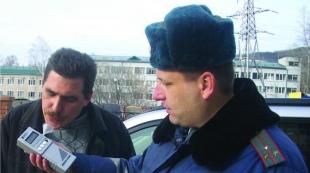Protective automatic shutdown. Safety shutdown
Protective shutdown - a type of protection against electric shock in electrical installations, providing automatic shutdown all phases of the emergency section of the network. The duration of disconnection of the damaged section of the network should be no more than 0.2 s.
Fields of application of protective shutdown: addition to protective grounding or zeroing in an electrified tool; addition to zeroing to turn off electrical equipment remote from the power source; measure of protection in mobile electrical installations with voltage up to 1000 V.
The essence of the protective shutdown is that damage to the electrical installation leads to changes in the network. For example, when a phase is shorted to earth, the phase voltage changes relative to the earth - the value of the phase voltage will tend to the value of the linear voltage. This creates a voltage between the source neutral and earth, the so-called zero-sequence voltage. The total resistance of the network relative to the ground decreases when the insulation resistance changes in the direction of its decrease, etc.
The principle of constructing protective shutdown schemes is that the listed regime changes in the network are perceived by a sensitive element (sensor) automatic device as signal inputs. The sensor acts as a current or voltage relay. At a certain value of the input value, the protective shutdown is activated and switches off the electrical installation. The value of the input variable is called the setpoint.
The block diagram of the residual current device (RCD) is shown in fig.
Rice. Structural diagram of the residual current device: D - sensor; P - converter; KPAS - emergency signal transmission channel; IO - executive body; MOP - a source of danger of defeat
The sensor D responds to a change in the input value B, amplifies it to the value KB (K is the transfer coefficient of the sensor) and sends it to the converter P.
The converter is used to convert the amplified input value into a KVA alarm. Further, the channel for transmitting the emergency signal of the KPAS transmits the AC signal from the converter to the executive body (EO). The executive body performs a protective function to eliminate the danger of damage - it turns off the electrical network.
The diagram shows areas of possible interference that affect the operation of the RCD.
On fig. a schematic diagram of a protective shutdown using an overcurrent relay is given.

Rice. Residual current device diagram: 1 - maximum current relay; 2 - current transformer; 3 - ground wire; 4 - ground electrode; 5 - electric motor; 6 - starter contacts; 7 - block contact; 8 - starter core; 9 - working coil; 10 - testing button; 11 - auxiliary resistance; 12 and 13 - stop and turn buttons; 14 - starter
The coil of this relay with normally closed contacts is connected through a current transformer or directly into the cut of the conductor going to a separate auxiliary or common ground electrode.
The electric motor is switched on by pressing the "Start" button. In this case, voltage is applied to the coil, the starter core is retracted, the contacts close and the electric motor is connected to the network. At the same time, the auxiliary contact is closed, as a result of which the coil remains energized.
When one of the phases is shorted to the case, a current circuit is formed: the place of damage - the case - the ground wire - the current transformer - the earth - the capacitance and insulation resistance of the wires of undamaged phases - the power source - the place of damage. If the current reaches the current relay trip setting, the relay will trip (i.e., its normally closed contact will open) and break the magnetic starter coil circuit. The core of this coil will be released and the starter will turn off.
To check the serviceability and reliability of the protective shutdown, a button is provided, when pressed, the device is triggered. The auxiliary resistance limits the earth fault current to the required value. Buttons are provided to enable and disable the starter.
The system of public catering enterprises includes a large complex of mobile (inventory) buildings made of metal or metal frame for street trade and service (snack bars, cafes, etc.). As a technical means of protection against electrical injuries and from a possible fire in electrical installations, the mandatory use of a residual current device at these facilities is prescribed in accordance with the requirements of GOST R50669-94 and GOST R50571.3-94.
Glavgosenergonadzor recommends using for this purpose an electromechanical device of the ASTRO-UZO type, the principle of which is based on the effect of possible leakage currents on a magnetoelectric latch, the winding of which is connected to the secondary winding of a leakage current transformer, with a core made of special material. The core in the normal mode of operation of the electrical network keeps the release mechanism in the on state. In the event of any malfunction in the secondary winding of the leakage current transformer, an EMF is induced, the core is retracted, and the magnetoelectric latch is activated, which is associated with the mechanism of free decoupling of contacts (the knife switch is turned off).
ASTRO-UZO has a Russian certificate of conformity. The device is included in the State Register.
A residual current device should be equipped not only with the above structures, but also with all premises with an increased or special risk of damage. electric shock, including saunas, showers, electrically heated greenhouses, etc.
Protective shutdown is a protection system that automatically turns off the electrical installation in the event of a danger of electric shock to a person (in the event of a ground fault, a decrease in insulation resistance, a grounding or zeroing fault). Protective shutdown is used when it is difficult to ground or neutralize, and also in addition to it in some cases.
Depending on what is the input value, to the change of which the protective shutdown reacts, protective shutdown circuits are distinguished: on the case voltage relative to the ground; for earth fault current; for zero sequence voltage or current; to the phase voltage relative to earth; for direct and alternating operating currents; combined.
One of the protective shutdown circuits for the case voltage relative to the ground is shown in fig. 13.2.
Rice. 13.2. Residual trip circuit for case voltage relative to ground
The main element of the circuit is a protective relay RZ. When one phase is shorted to the housing, the housing will be energized above the permissible voltage, the RZ relay core is drawn in and closes the power supply circuit of the AB circuit breaker coil, as a result of which the electrical installation is turned off.
The advantage of the scheme is its simplicity. Disadvantages: the need to have an auxiliary ground RB; non-selectivity of shutdown in case of connection of several cases to one grounding; setpoint variability with changes in resistance RВ. Residual current devices that respond to zero-sequence current are used for any voltage, both with grounded and isolated neutral.
Fires and explosions
Fires and explosions are the most common emergency events in modern industrial society.
Most often and, as a rule, with severe social and economic consequences, fires occur at fire and fire hazardous objects.
The objects at which explosions and fires are most likely include:
Enterprises of the chemical, oil refining and pulp and paper industries;
Enterprises using gas and oil products as raw materials for energy carriers;
Gas and oil pipelines;
All types of transport transporting explosive and flammable substances;
Fuel stations;
Food industry enterprises;
Enterprises using paints and varnishes, etc.
EXPLOSIVE AND FIRE HAZARDOUS substances and mixtures are;
Explosives and gunpowder used for military and industrial purposes, manufactured at industrial enterprises stored in warehouses separately and in products and transported various types transport;
Mixtures of gaseous and liquefied hydrocarbon products (methane, propane, butane, ethylene, propylene, etc.), as well as sugar, wood, flour, etc. dust with air;
Vapors of gasoline, kerosene, natural gas on various vehicles, fuel stations, etc.
Fires at enterprises can also occur due to damage to electrical wiring and energized machines, furnaces and heating systems, containers with flammable liquids, etc.
There are also cases of explosions and fires in residential premises due to malfunctions and violations of the rules for the operation of gas stoves.
Characteristics of combustible substances
Substances that can burn on their own after the ignition source is removed are called combustible, in contrast to substances that do not burn in air and are called non-combustible. An intermediate position is occupied by hardly combustible substances that ignite under the action of an ignition source, but stop burning after the latter is removed.
All combustible substances are divided into the following main groups.
1. COMBUSTIBLE GASES (GH) - substances capable of forming flammable and explosive mixtures with air at temperatures not exceeding 50 ° C. Combustible gases include individual substances: ammonia, acetylene, butadiene, butane, butyl acetate, hydrogen, vinyl chloride, isobutane, isobutylene , methane, carbon monoxide, propane, propylene, hydrogen sulfide, formaldehyde, and vapors of flammable and combustible liquids.
2. FLAMMABLE LIQUIDS (FLL) - substances that can burn independently after the ignition source is removed and have a flash point not higher than 61 ° C (in a closed crucible) or 66 ° (in an open one). Such liquids include individual substances: acetone, benzene, hexane, heptane, dimethylformamide, difluorodichloromethane, isopentane, isopropylbenzene, xylene, methyl alcohol, carbon disulfide, styrene, acetic acid, chlorobenzene, cyclohexane, ethyl acetate, ethylbenzene, ethyl alcohol, as well as mixtures and technical products gasoline, diesel fuel, kerosene, white spirit, solvents.
3. COMBUSTIBLE LIQUIDS (GZh) - substances capable of burning independently after the ignition source is removed and having a flash point above 61 ° (in a closed crucible) or 66 ° C (in an open one). Flammable liquids include the following individual substances: aniline, hexadecane, hexyl alcohol, glycerin, ethylene glycol, as well as mixtures and technical products, for example, oils: transformer, vaseline, castor.
4. COMBUSTIBLE DUST (FP) - solid substances in a finely dispersed state. Combustible dust in the air (aerosol) is capable of forming explosive mixtures with it. Dust (airgel) deposited on the walls, ceiling, equipment surfaces is a fire hazard.
Combustible dusts are divided into four classes according to the degree of explosion and fire hazard.
Class 1 - the most explosive - aerosols with a lower concentration limit of flammability (explosiveness) (LEL) up to 15 g / m3 (sulfur, naphthalene, rosin, mill dust, peat, ebonite).
2nd class - explosive - aerosols having a LEL value from 15 to 65 g / m3 (aluminum powder, lignin, flour, hay, shale dust).
3rd class - the most flammable - aerogels with a LEL value greater than 65 g / m3 and a self-ignition temperature of up to 250 ° C (tobacco, elevator dust).
4th class - flammable - aerogels with a LEL value of more than 65 g / m3 and an autoignition temperature of more than 250 ° C (sawdust, zinc dust).
In accordance with NPB 105-03, buildings and structures that house production facilities are divided into five categories.
| Room category | Characteristics of substances and materials located (circulating) in the room |
| And explosive and flammable | Combustible gases, flammable liquids with a flashpoint of not more than 28 ° C in such an amount that they can form explosive vapor-gas-air mixtures, upon ignition of which an estimated excess explosion pressure in the room develops in excess of 5 kPa. Substances and materials capable of exploding and burning when interacting with water, atmospheric oxygen or one with the other in such an amount that the calculated overpressure of the explosion in the room exceeds 5 kPa. |
| B explosive and flammable | Flammable dusts or fibres, flammable liquids with a flash point of more than 28 ° C, flammable liquids in such an amount that they can form explosive dust or vapor-air mixtures, upon ignition of which an estimated overpressure of the explosion in the room develops in excess of 5 kPa. |
| B1 - B4 fire hazardous | Combustible and slow-burning liquids, solid combustible and slow-burning substances and materials that can only burn when interacting with water, atmospheric oxygen or one with the other, provided that the premises in which they are available or circulated do not belong to categories A or B |
| G | Non-flammable substances and materials in a hot, incandescent or molten state, the processing of which is accompanied by the release of radiant heat, sparks and flames, combustible gases, liquids and solids that are burned or disposed of as fuel |
| D | Non-flammable substances and materials in a cold state |
EXAMPLES of production facilities located in premises of categories A, B, C, D and D.
Category A: shops for the processing and use of metallic sodium and potassium, oil refining and chemical industries, warehouses for gasoline and cylinders for combustible gases, premises for stationary acid and alkaline battery installations, hydrogen stations, etc.
The nature of the development of a fire and the explosion that follows it largely depends on the fire resistance of structures - the properties of structures to maintain their bearing and enclosing capacity in a fire. In accordance with SNiP 2.01.02.85, five degrees of fire resistance of buildings and structures are distinguished: I, II, III, IV, V.
The fire resistance of building structures characterizes the following parameters:
1) the minimum fire resistance limit of a building structure - the time in hours from the beginning of the impact of fire on the structure until the formation of through cracks in it or reaching a temperature of 200 ° C on the surface opposite to the fire.
2) the maximum limit for the spread of fire along building structures visually determined size of damage in centimeters, which is considered to be charring or burnout of materials, as well as melting of thermoplastic materials outside the heating zone.
All Construction Materials according to flammability, they are divided into three groups: FIRE-RESISTANT, FIRE-RESISTANT and COMBUStable.
FIREPROOF materials and structures include metals and inorganic mineral materials used in construction and products made from them: sand, clay, gravel, asbestos, brick, concrete, etc.
FIRM-RESISTANT materials and products from them, consisting of combustible and non-combustible components: adobe brick, gypsum dry plaster, fibrolite, lenolium, ebonite, etc.
COMBUSTIBLE materials include all materials of organic origin: cardboard, felt, asphalt, roofing material, roofing felt, etc.
Basic concepts of fires and explosions.
FIRE is an uncontrolled burning outside a special focus, causing material damage.
BURNING - a chemical oxidation reaction, accompanied by the release of a large amount of heat and usually glow. For combustion to occur, it is necessary to have a combustible substance, an oxidizing agent (usually atmospheric oxygen, as well as chlorine, fluorine, iodine, bromine, nitrogen oxides) and an ignition source. In addition, it is necessary that the combustible substance be heated to certain temperature and was in a certain quantitative ratio with the oxidizer, and the ignition source would have sufficient energy.
EXPLOSION - an extremely rapid release of energy in a limited volume, associated with a sudden change in the state of matter and accompanied by the formation of a large amount of compressed gases capable of producing mechanical work.
An explosion is a special case of combustion. But in the usual sense, it has in common with combustion only that it is an oxidative reaction. An explosion is characterized by the following features:
High rate of chemical transformation;
A large number of gaseous products;
Powerful crushing (blasting) action;
Strong sound effect.
The duration of the explosion is about 10-5...10-6 s. Therefore, its power is very high, although the reserves of internal energy of explosives and mixtures are not higher than those of combustible substances that burn under their usual conditions.
When analyzing explosive phenomena, two types of explosions are considered: explosive combustion and detonation.
The first includes explosions of air-fuel mixtures (mixtures of hydrocarbons, vapors of petroleum products, as well as sugar, wood, flour and other dust with air). characteristic feature such an explosion is a burning velocity of the order of several hundred m/s.
DETONATING - a very rapid decomposition of an explosive (gas-air mixture). propagating along it at a speed of several km / s and characterized by features inherent in any explosion indicated above. Detonation is typical for military and industrial explosives, as well as for fuel-air mixtures in a closed volume.
The difference between explosive combustion and detonation lies in the rate of decomposition, in the latter it is an order of magnitude higher.
In conclusion, three types of decomposition should be compared: ordinary combustion, explosive and detonation.
NORMAL BURNING processes proceed relatively slowly and at a variable speed - usually from fractions of a centimeter to several meters per second. The burning rate essentially depends on many factors, but mainly on external pressure, increasing noticeably with an increase in the latter. In the open air, this process proceeds relatively sluggishly and is not accompanied by any significant sound effect. In a limited volume, the process proceeds much more energetically, is characterized by a more or less rapid increase in pressure and the ability of combustion gases to do work.
EXPLOSIVE COMBUSTION, in comparison with the usual one, is a qualitatively different form of the propagation of the process. Distinctive features of explosive combustion are: a sharp jump in pressure at the site of the explosion, a variable rate of propagation of the process, measured in hundreds of meters per second and relatively little dependent on external conditions. The nature of the action of the explosion is a sharp blow of gases to environment, causing crushing and severe deformation of objects at relatively short distances from the explosion site.
DETONATION is an explosion propagating with the maximum possible speed for a given substance (mixture) and given conditions (for example, mixture concentration), exceeding the speed of sound in a given substance and measured in thousands of meters per second. Detonation does not differ in the nature and essence of the phenomenon from explosive combustion, but is its stationary form. The detonation velocity is a constant value for a given substance (a mixture of a certain concentration). Under detonation conditions, the maximum destructive effect of the explosion is achieved.
A great danger is the transition of voltage to metal structural non-current-carrying parts. The most perfect way to protect against the appearance of dangerous voltage on the structural parts of electrical equipment is a protective shutdown.
Protective shutdown is used to protect against the appearance of dangerous voltage.
Shutdown of electrical installations in case of short circuits to the case in this case is provided by special devices that automatically relieve voltage from the installation. Such devices are circuit breakers or contactors equipped with a special residual current relay.
The relay consists of an electromagnetic coil, the core of which closes its contacts when de-energized. The relay contacts are connected in series with the stop button in the contactor control circuit.

When voltage appears at the terminals of the relay coil and a sufficient current flows through it, the coil core is drawn in and opens its contacts in the control circuit, as a result of which the contactor disconnects the damaged current receiver from the network.
Circuits for connecting the residual current relay may be different. So, in fig. Figure 1 shows a protective shutdown circuit with an auxiliary grounding switch, in which the relay coil is connected to the body of the protected object and to the ground.
The electromagnet is adjusted in such a way that when a voltage of 24-40 V appears on the protected object, a current passes through the coil winding, the core of the electromagnet is drawn in under the influence of this relay, it opens its contact and the electric motor is disconnected from the network. Grounding resistance can be quite high (300-500 ohms), making grounding easy.
On fig. 2 shows another protective shutdown circuit. The residual current relay is connected to the body of the protected object and to a point common to the columns connected to the network from selenium rectifier plates connected in a star. The coil can be adjusted so that when a current of 0.01 A flows through it, the core is retracted and the relay contact opens, followed by disconnection of the object itself from the network by means of a contactor.

Protective shutdown is used in the following cases:
- in electrical installations with isolated neutral, which are subject to increased safety requirements, in addition to the grounding device (for example, underground work, etc.);
- in electrical installations with a dead-earthed neutral with a voltage of up to 1000 V, instead of connecting equipment cases to a grounded neutral, if this connection causes difficulties, while the protected installation must have a grounding device that meets the requirements of electrical installations with an insulating neutral;
- in mobile installations, when the grounding device presents significant difficulties.
A protective shutdown is a device that quickly (no more than 0.2 s) automatically turns off a section of the electrical network when there is a danger of electric shock to a person in it.
Such a danger may arise, in particular, when a phase is shorted to the electrical equipment case; when the insulation resistance of the phases relative to the ground drops below a certain limit; when more than high voltage; when a person touches a live part that is energized. In these cases, some electrical parameters change in the network; for example, the case voltage relative to earth, the earth fault current, the phase voltage relative to earth, the zero-sequence voltage, etc. can change. Any of these parameters, or rather, changing it to a certain limit, at which there is a danger of electric shock to a person, can serve as an impulse that triggers a protective shutdown device, i.e., automatic shutdown of a dangerous section of the network.
The main parts of a residual current device are a residual current device and circuit breaker.
Residual current device - a set of individual elements that respond to a change in any parameter of the electrical network and give a signal to turn off the circuit breaker. These elements are: a sensor is a device that perceives a change in a parameter and converts it into an appropriate signal. As a rule, relays of the corresponding types serve as sensors; an amplifier designed to amplify the sensor signal if it is not powerful enough; control circuits that serve to periodically check the health of the protective-switching device circuit; auxiliary elements - signal lamps, measuring instruments(for example, an ohmmeter), characterizing the state of the electrical installation, etc.
A circuit breaker is a device used to turn on and off circuits under load and in case of short circuits. It should turn off the circuit automatically when a signal is received from the residual current device.
Device types. Each protective and disconnecting device, depending on the parameter to which it responds, can be assigned to one or another type, including types of devices that respond to case voltage relative to ground, ground fault current, phase voltage relative to ground, zero voltage sequence, zero sequence current, operating current, etc. Below, two types of such devices are considered as an example.
Protective disconnecting devices that respond to the voltage of the case relative to the ground are designed to eliminate the danger of electric shock when an increased voltage occurs on a grounded or bulleted case. These devices are an additional measure of protection for grounding or grounding.
The principle of operation is a quick disconnection from the network of the installation if the voltage of its case relative to the ground turns out to be higher than a certain maximum permissible value Uk.dop, as a result of which touching the case becomes dangerous.
circuit diagram such a device is shown in Fig. 76. Here, a relay serves as a sensor maximum voltage connected between the protected housing and the auxiliary earthing switch RB directly or through a voltage transformer. The electrodes of the auxiliary earth electrode are placed in the zone of zero potential, i.e., not closer than 15-20 m from the earth electrode of the R3 housing or the neutral wire earth electrodes.
In the event of a phase breakdown on a grounded or grounded case, the protective property of grounding (or grounding) will first appear, due to which the case voltage will be limited to a certain UK limit. Then, if UK turns out to be higher than the pre-set maximum allowable voltage Uk.add, a protective shutdown device is triggered, i.e. the overvoltage relay, having closed the contacts, will supply power to the trip coil and thereby cause the unit to be disconnected from the network.
Rice. 76. Schematic diagram of a protective shutdown device that responds to the voltage of the case relative to the ground:
1 - body; 2 - automatic switch; BUT - opening coil; H - maximum voltage relay; R3 - protective earth resistance; RB - auxiliary earth resistance
The use of this type of protective and disconnecting devices is limited to installations with individual grounding.
Protective-switching devices that respond to operational direct current are designed for continuous automatic monitoring of the network insulation, as well as for protecting a person who has touched the current-carrying part from electric shock.
In these devices, the insulation resistance of the wires relative to the ground is estimated by the value direct current passing through these resistances and received from an external source.
If the insulation resistance of the wires drops below a certain predetermined limit, as a result of damage or a person touching the wire, the direct current will increase and cause the corresponding section to turn off.
The schematic diagram of this device is shown in fig. 77. The sensor is a current relay T with a low operating current (several milliamps). Three-phase choke - transformer DT is designed to obtain the zero point of the network. Single-phase choke D limits leakage alternating current to earth, to which it exerts a large inductive reactance.

Rice. 77. Schematic diagram of a protective shutdown device that responds to operational direct current: *
1 - automatic switch;
2 - direct current source; KO - circuit breaker trip coil; DT - three-phase choke; D - single-phase choke; T - current relay; R1, R2, R3 - phase insulation resistances relative to earth; Ram - phase-to-earth fault resistance
Direct current Ir, received from an external source, flows through a closed circuit: source - ground - insulation resistance of all wires relative to ground - wires - three-phase choke DT - single-phase choke D - current relay winding T - current source.
The value of this current (A) depends on the voltage of the DC source Uist and the total resistance of the circuit:
![]()
where Rd is the total resistance of the relay and chokes, Ohm;
Ra is the total insulation resistance of wires R1, R2, R3 and phase-to-ground fault R3M.
During normal operation of the network, the resistance Rd is large, and therefore the current Ip is negligible. In the case of a decrease in the insulation resistance of one (or two, three phases) as a result of a phase short circuit to the ground or to the case, or as a result of a person touching the phase, the resistance Re will decrease, and the current Ir will increase and, if it exceeds the relay operation current, a shutdown will occur. mains from the power source.
The scope of these devices is short-distance networks with voltage up to 1000 V with isolated neutral.
RCD(Residual Current Device) is a switching device designed to protect the electrical circuit from leakage currents, that is, currents flowing through unwanted, normal conditions operation, conductive paths, which in turn provides protection from fires (ignition of electrical wiring) and from electric shock to a person.
The definition of "switching" means that this device can turn on and off electrical circuits, in other words, switch them.
The RCD also has other name options, for example: differential switch, differential current switch, (abbreviated current differential switch), etc.
The device and principle of operation of the RCD
And so, for clarity, let's imagine the simplest circuit connections through RCD light bulbs:
It can be seen from the diagram that during the normal operation of the RCD, when its moving contacts are closed, the current I 1 of, for example, 5 Amperes from the phase wire passes through the magnetic circuit of the RCD, then through the light bulb, and returns to the network through the neutral conductor, also through the magnetic circuit of the RCD, while the value of the current I 2 is equal to the value of the current I 1 and is 5 amperes.
In such a situation, part of the current of the electrical circuit coming from the phase wire will not return to the network, but passing through the human body will go into the ground, therefore the current I 2 that will return to the network through the RCD magnetic circuit along the neutral wire will be less than the current I 1 entering the network, accordingly, the value of the magnetic flux Ф 1 will become greater than the value of the magnetic flux Ф 2, as a result of which the total magnetic flux in the RCD magnetic circuit will no longer be equal to zero.
For example, current I 1 \u003d 6A, current I 2 \u003d 5.5A, i.e. 0.5 Ampere flows through the human body into the ground (i.e. 0.5 Ampere - leakage current), then the magnetic flux Ф 1 will be equal to 6 conventional units, and the magnetic flux Ф 2 - 5.5 conventional units then the total magnetic flux will be equal to:
F sums \u003d F 1 + F 2 =6+(-5.5)=0.5 arb. units
The resulting total magnetic flux induces an electric current in the secondary winding, which, passing through the magnetoelectric relay, puts it into operation, and it, in turn, opens the moving contacts, turning off the electrical circuit.
Checking the performance of the RCD is carried out by pressing the "TEST" button. Pressing this button artificially creates a leakage current in the RCD, which should lead to the tripping of the RCD.
RCD connection diagram.
IMPORTANT! Since there is no protection against overcurrents in the RCD, for any scheme of its connection, an installation must also be provided to protect the RCD from overload currents and short circuits.
RCD connection is carried out according to one of the following schemes, depending on the type of network:
RCD connection without grounding:
Such a scheme is used, as a rule, in buildings with old electrical wiring (two-wire), in which there is no ground wire.
RCD connection with grounding:
N-C-S(when the neutral conductor is divided into zero working and zero protective):
RCD connection diagram in the mains(when zero working and zero protective conductors separated):
IMPORTANT! In the coverage area of the RCD, it is impossible to combine zero protective (ground wire) and zero working conductors! In other words, it is impossible in the circuit, after the installed RCD, to connect the working zero (blue wire in the diagram) and the ground wire (green wire in the diagram) to each other.
Errors in the connection diagrams due to which the RCD is knocked out.
As mentioned above, the RCD is triggered by leakage currents, i.e. if the RCD has tripped, this means that a person has become energized or, for some reason, the insulation of the electrical wiring or electrical equipment has been damaged.
But what if the RCD spontaneously trips and there is no damage anywhere, and the connected electrical equipment is working properly? Perhaps the whole point is one of the following errors in the network diagram of the protected RCD.
One of the most common mistakes is to combine the zero protective and zero working conductor in the RCD coverage area:
In this case, the amount of current leaving the network through the RCD through the phase wire will be greater than the amount of current returning to the network through the neutral conductor. part of the current will flow past the RCD along the ground conductor, which will cause the RCD to trip.
Also, there are often cases of using a ground conductor or a third-party conductive grounded part as a zero working conductor (for example, building fittings, a heating system, water pipe). Such a connection usually occurs when the zero working conductor is damaged:
Both of these cases lead to the fact that the RCD knocks out, because. the current leaving the network through the phase wire, the current through the RCD does not return back to the network.
How to choose an RCD? Types and characteristics of RCD.
To choose the right RCD and eliminate the possibility of error, use ours.
RCD is selected according to its main characteristics. These include: 
- Rated current- the maximum current at which the RCD is able to work for a long time without losing its performance;
- Residual current- the minimum leakage current at which the RCD will turn off the electrical circuit;
- Rated voltage- the voltage at which the RCD is able to work for a long time without losing its performance
- Current type- constant (indicated by "-") or variable (indicated by "~");
- Conditional short-circuit current- the current that the RCD can withstand for a short time until the protective equipment (fuse or circuit breaker) trips.
RCD selection is based on the following criteria:
- By rated voltage and type of network: The rated voltage of the RCD must be greater than or equal to the rated voltage of the circuit it protects:
Unom. RCD⩾ Unom. networks
At single-phase network required bipolar RCD, at three-phase network — four-pole.
- By rated current: in accordance with paragraph 7.1.76. PUE the use of RCDs in group lines that do not have protection against, without an additional device that provides this protection, is not allowed, while a design check of the RCD in overcurrent modes is necessary, taking into account the protective characteristics of the higher device that provides protection against overcurrent.
From the foregoing, it follows that the RCD must be preceded by a protection device (or) it is for the current of this higher protection device that it is necessary to select the rated current of the RCD based on the condition that the rated current of the RCD must be greater than or equal to the rated current of the protection device installed before it:
I nom. RCD ⩾ I nom. protection apparatus
At the same time, it is recommended that the rated current of the RCD be one step higher than the rated current of the higher protection device (for example, if a 25 Amp automatic device is installed in front of the RCD, it is recommended to install the RCD with a rated current of 32 Amperes)
For reference - the standard values of the rated currents of the RCD: 4A, 5A, 6A, 8A, 10A, 13A, 16A, 20A, 25A, 32A, 40A, 50A, 63A, etc.,
— By differential current:
The differential current is one of the main characteristics of the RCD, which shows at what value of the leakage current the RCD will turn off the circuit.
In accordance with paragraph 7.1.83. PUE: The total leakage current of the network, taking into account the connected stationary and portable power receivers in normal operation, should not exceed 1/3 of the rated current of the RCD. In the absence of data, the leakage current of electrical receivers should be taken at the rate of 0.4 mA per 1 A of load current, and the network leakage current at the rate of 10 μA per 1 m of the length of the phase conductor. Those. The network differential current can be calculated using the following formula:
Δ I network \u003d ((0.4 * I network) + (0.01 * L wires)) * 3, milliamps
where: Inetworks- network current (calculated according to the formula above), in Amperes; Lwires— the total length of the wiring of the protected electrical network in meters.
Calculating Δ I networks accept the nearest higher standard value of the RCD differential current ΔI RCD:
Δ I RCD ⩾ Δ I networks
The standard RCD residual current values are: 6, 10, 30, 100, 300, 500mA
Differential currents: 100, 300 and 500mA are used to protect against fires, and currents: 6, 10, 30mA - to protect against electric shock. At the same time, currents of 6 and 10mA are used, as a rule, for the protection of individual consumers and, and a differential current of 30mA is suitable for general protection of the power network.
If the RCD is necessary to protect against electric shock, and according to the calculation, the leakage current was more than 30mA, it is necessary to provide for the installation of several RCDs on different groups of lines, for example, one RCD to protect sockets in rooms, and the second to protect sockets in the kitchen, reducing the by the very power passing through each RCD and, as a result, reducing the leakage current of the network, i.e. in this case, the calculation will need to be made for two or more RCDs that will be installed on different lines.
- By type of RCD:
RCDs are of two types: electromechanical and electronic. We considered the principle of operation of an electromechanical RCD above, its main working body is a differential transformer (a magnetic circuit with a winding) that compares the values of the current flowing into the network and the current returning from the network, and in electronic this function is performed by an electronic board for which voltage is needed.
10








